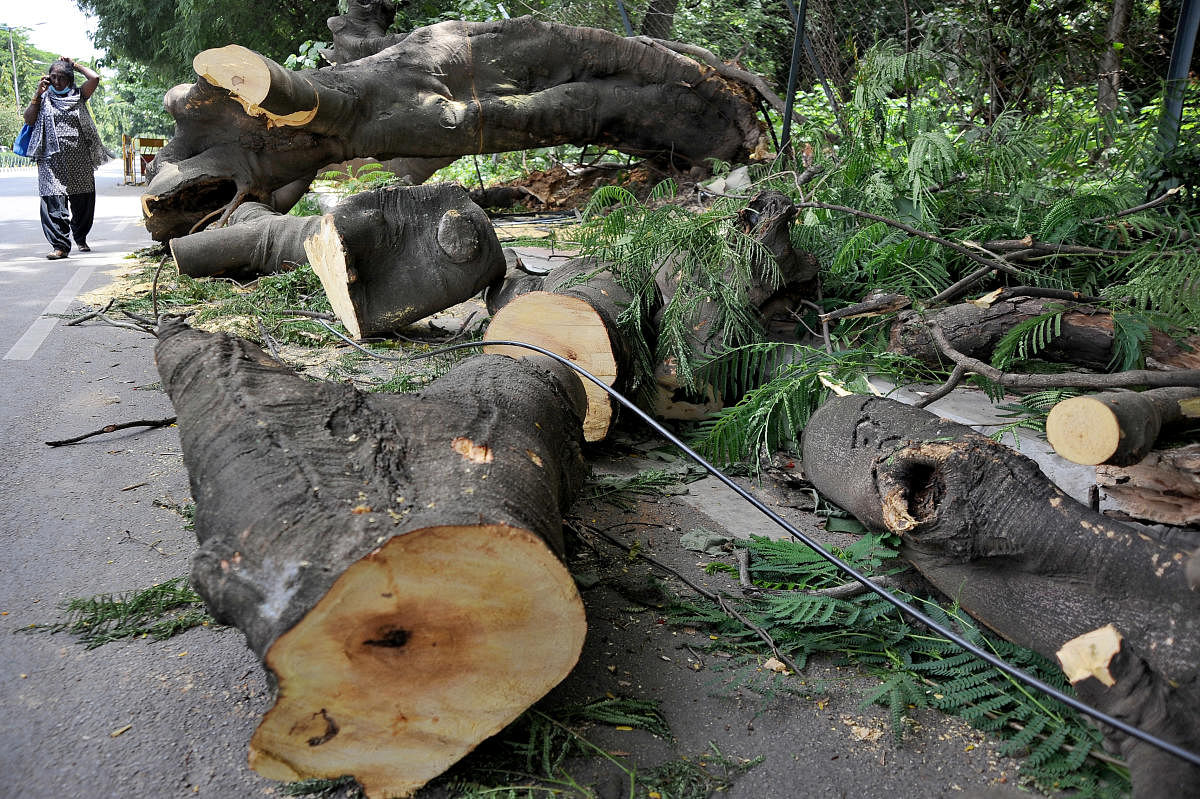
Despite the large-scale damage caused by natural disasters and zoonotic diseases such as Covid-19, it is distressing to note that the Narendra Modi government seems determined to go ahead with the Draft EIA Notification 2020 (EIA 2020). If implemented this will sign the death knell of India’s forests, with adverse economic and environmental impacts. When the government’s efforts should be focused on overcoming Covid-19 and the threats on our northern borders, it is lamentable that under the cover of the pandemic, the government is weakening the environmental laws of the country for the benefit of corporates, the real estate sector and the corrupt.
The preamble of the notification states that “the central government seeks to make the process more transparent and expedient through implementation of online system, further delegation, rationalisations, etc.” It cites a National Green Tribunal order of 2018 which directed the Ministry of Environment, Forests and Climate Change (MoEFCC) to strengthen the monitoring mechanism for compliance of conditions of prior clearance. Rather than strengthening the regulatory mechanism and enhancing penalties for violators the proposed changes seek to weaken environmental regulations and allow violators to go scot-free.
As per media reports, one reason advanced by the central government for the proposed changes is to facilitate ‘ease of doing business.’ But while the EIA notification of 2006 (EIA 2006) runs into 45 pages with six appendices, EIA 2020 runs into 83 pages with 15 appendices. The application forms and requirements are so complex and cumbersome that rather than helping in the ease of doing business it will only repel investors, increase red tape, and fatten the purses of corrupt officials.
The concern about EIA 2020 is centred around three issues, namely omission of public consultation for certain categories of projects even if these may have adverse environmental and social impacts; post-facto approval of projects that were implemented without prior environment clearance; and reducing the time period for public consultations.
The draft EIA 2020 categorises projects into three categories -- A, B1 and B2 -- based on their potential social and environmental impacts, and spatial extent of those impacts. While categories A and B1 projects mandate prior environmental clearance and public consultation, category B2 projects are exempted from public consultation even if they may have adverse environmental and social impacts.
Category B2 projects include highways, expressways, ring roads, expansion of existing or widening of existing highways, buildings, and construction with prescribed threshold limits. These threshold limits themselves are to be increased under EIA 2020. For instance, highway projects of up to 100 km under EIA 2020 will now receive the green signal without any public consultation even if they involve destruction of tree cover or pristine forests.
While there is a strong case for strengthening the participatory process for approval of such projects, EIA 2020 seeks to reduce the time frame for public notice and consultations. EIA 2020 continues the rule that allows for commencing public consultation proceedings without any quorum!
The ominous signs of the government’s intentions are visible. In the midst of the pandemic, the National Board for Wildlife met, with Union Environment Minister Prakash Javadekar chairing it (instead of the Prime Minister, who heads it but has reportedly never attended it), through video-conferencing and approved 31 proposals without even assessing their environmental impacts. These include 16 projects in ecologically fragile or bio-rich areas such as national parks, wildlife sanctuaries and tiger reserves. Environmental organisations and activists from the ecologically fragile Himalayan region have, in a memorandum to the MoEFCC, pointed out that the Himalayan region has already witnessed large-scale destruction due to climate change and unbridled development. It notes that if the Himalayan region is developed to generate a potential of 150,000 MW of power, nearly 90% of the Indian Himalayan valleys would be affected by dam-building and 27% of these dams would affect dense forests, and the lives and livelihoods of people. The clearance of a hydro-electric project in Arunachal Pradesh will mean the felling of 278,000 trees in the Himalayan biodiversity hotspot.
In Karnataka, the State Wildlife Board which had earlier rejected the Hubballi-Ankola railway line was steamrolled into clearing the project due to the pressure tactics of two BJP ministers. This railway line will cut through the dense forests of the Western Ghats biodiversity hotspot in Uttar Kannada district and will require the destruction of about two lakh trees. To deflect criticism, the state government claimed that a study by a scientist from the Indian Institute of Science had endorsed the project though nobody is aware as to who conducted this study, whether a social cost-benefit appraisal was conducted and what its findings were.
To facilitate environmental clearance, even government agencies are fudging data. A recent Deccan Herald report (July 25) notes that the Bangalore Development Authority, which had consistently maintained that only 200 trees would be affected by the Peripheral Ring Road (PPR), has now admitted, after a rap from the Supreme Court, that about 33,838 trees would be affected by the project, of which 9,300 trees are located in the Tippagondanahalli catchment area.
Post-facto approval of projects without prior environmental clearance, as proposed by EIA 2020, implies that buildings or apartment complexes which have encroached on catchments or lakebed areas, illegal resorts near national parks, and industries that pollute will all be approved, most likely without even any penalty.
In its climate action plan submitted to the United Nations Framework Convention on Climate Change (UNFCCC), India had said it would endeavour to increase the forest and tree cover by 2030 so as to create an additional carbon sink of 2.5-3 billion tons of CO2 equivalent. Rather than making sincere efforts to protect our forests, the Modi government is weakening India’s environmental regulations and thereby giving an open invitation to disasters and pandemics.
(The author is an economist)